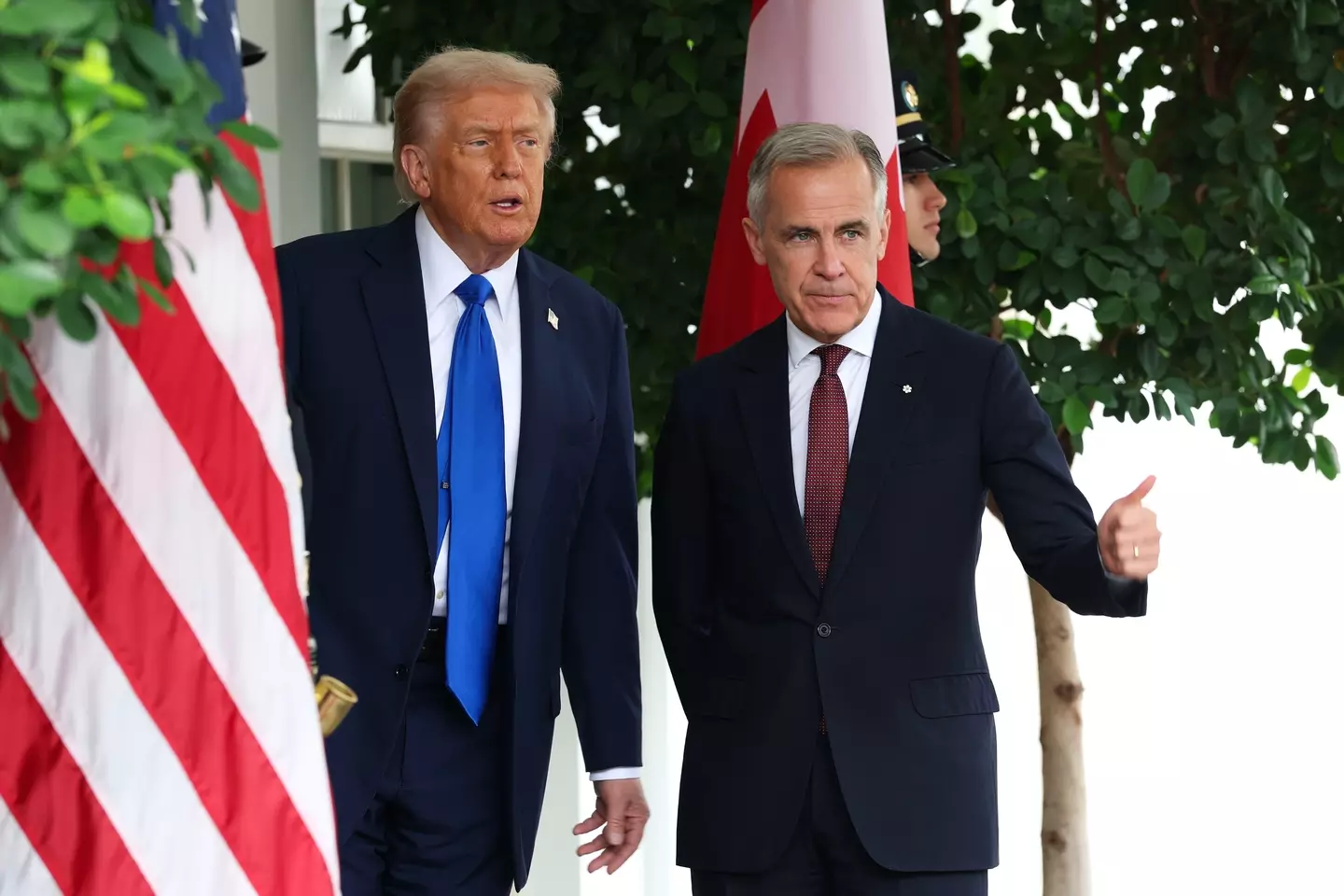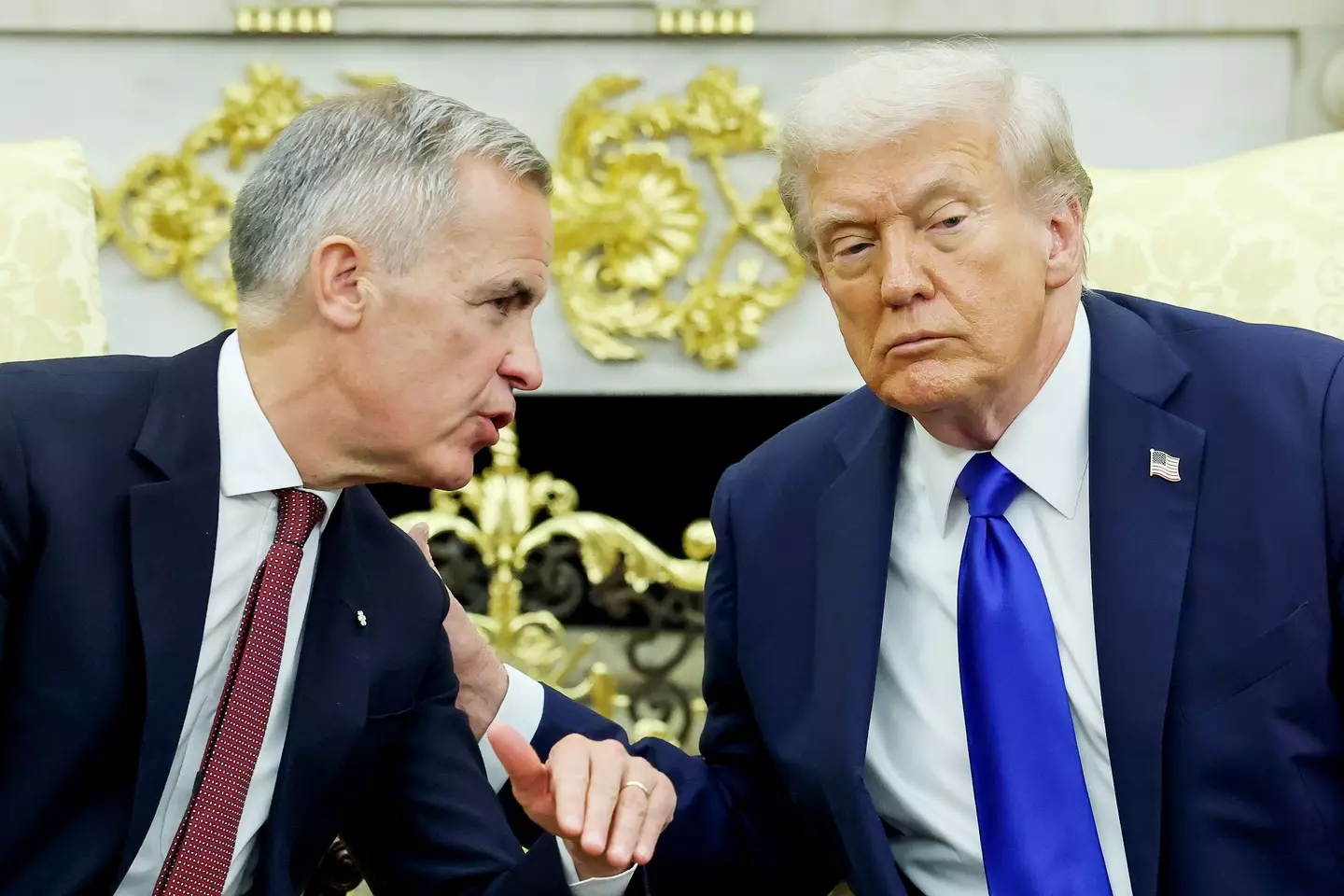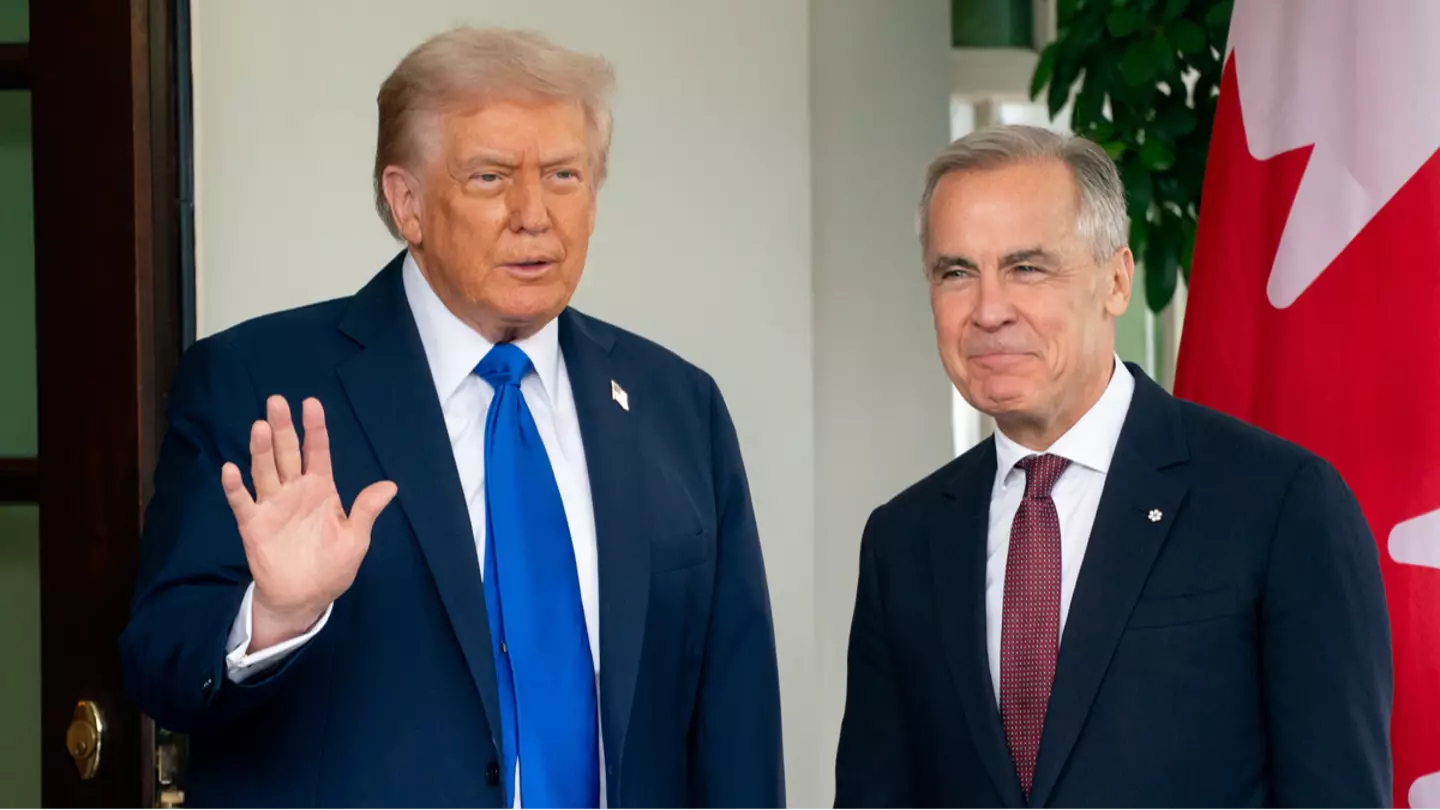President Donald Trump has reignited discussions about the United States potentially ‘absorbing’ Canada, after previously indicating he might use ‘economic force’ to achieve this unprecedented goal.
On Tuesday, October 7, Trump, aged 79, held a meeting with Canadian Prime Minister Mark Carney, aged 60, in the Oval Office to negotiate trade deals. This meeting followed the Republican administration’s decision to raise tariffs on Canadian goods to 35 percent, prompting Canada to retaliate with significant levies on U.S. exports.
The trade conflict began in February when Trump suggested that the broad tariffs on Canadian goods were connected to border security concerns.
Subsequently, the 47th President scaled back the duties to only affect goods not included in the Canada-U.S.-Mexico Agreement (CUSMA).
Currently, specific sectors face tariffs on Canadian products, such as a 50 percent tax on metals and a 25 percent duty on automobiles.

Trump has stated that there is a ‘mutual love’ between the U.S. and Canada despite the ongoing intense trade discussions.
He assured, “people of Canada will love us again” once the specifics of the trade agreement are disclosed.
“I think they’re going to be very happy,” Trump mentioned to reporters in Washington. “They talk about competitiveness; he’s [Carney] a very competitive person.”
According to BBC News, Trump acknowledged that negotiations with Canada are ‘more complicated than maybe any other agreement’ the U.S. has engaged in, partly due to the competitive nature of both countries in similar industries.
“The problem is that they want a car company, and I want a car company,” he explained. “They want steel, and we want steel… in other countries, they’re very far away and there’s no problem.”
He also hinted at the possibility of renegotiating the CUSMA trade agreement.
Prior to the 2.5-hour meeting, Carney described Trump as a ‘transformative president’ and highlighted some of his accomplishments during his second term.
As reported by BNN Bloomberg, during this exchange, Trump once again mentioned the idea of Canada becoming the 51st state of America.
“And the merger of Canada and the United States,” he seemed to joke.
Trump’s recent comments about possibly absorbing Canada follow earlier statements where he threatened to use ‘economic force’ to achieve such an annexation, as noted by CBC.
In a January press conference, when asked if he was ‘considering military force to annex and acquire Canada’ after rejecting similar actions regarding the Panama Canal and Greenland, Trump responded: “No. Economic force.”

During another conference in Palm Beach, Trump speculated that merging the two nations would ‘really be something’, noting: “You get rid of the artificially drawn line and you take a look at what that looks like and it would also be much better national security. Don’t forget: We basically protect Canada.”
In response, former Prime Minister Justin Trudeau stated there wasn’t a ‘snowball’s chance in hell that Canada would become part of the United States’.
“Workers and communities in both our countries benefit from being each other’s biggest trading and security partner,” he added via X (formerly known as Twitter).
Trump later conceded that he had ‘no right’ to annex Canada, as reported by the outlet.
Both Trump and Trudeau’s successor remained reserved regarding any concrete results from the Tuesday tariff meeting.
The latter suggested, however, that the talks were ‘successful,’ ‘positive,’ and ‘effective.’ The status of trade negotiations and the timeline for public disclosure of details remains unclear.

